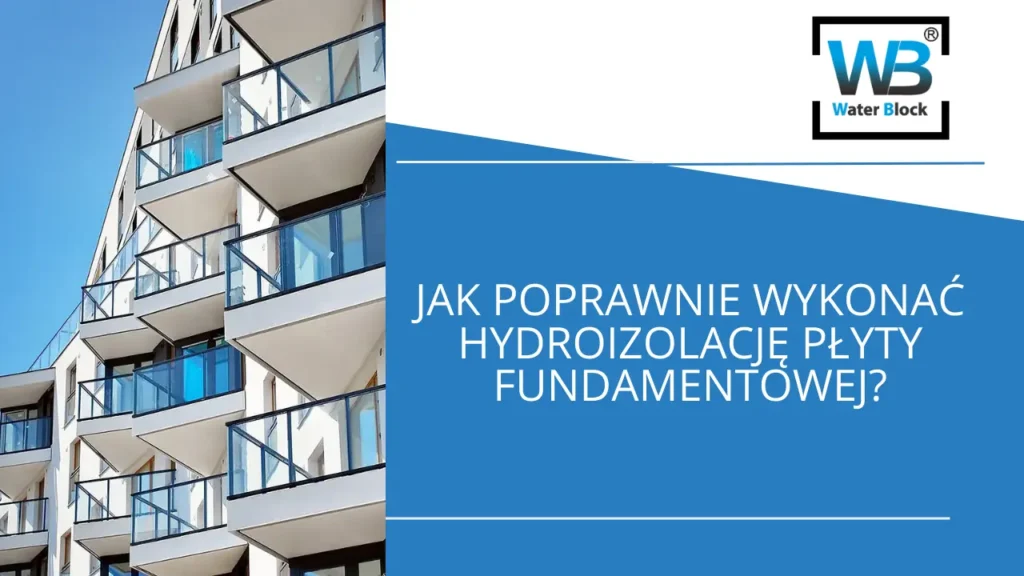Waterproofing the foundation slab is a key element in the construction of any house. It provides protection against dampness and groundwater, which can damage the structure of the building and affect its durability and comfort. Improperly executed insulation can lead to problems such as the appearance of mould, fungi or corrosion of m1TP2Building materials. In this article, we will discuss step by step how to properly waterproof a foundation slab, what to pay special attention to and which materials are best to use.
Why is waterproofing the foundation slab so important?
The foundations of a building are the most vulnerable to moisture and groundwater. Without adequate protection, water can seep into the building, causing structural damage and a negative impact on the health of the occupants. To prevent these problems, waterproofing must be carried out in accordance with the rules of construction.
Key functions of foundation slab waterproofing:
- moisture protection,
- insulation against groundwater,
- building durability.
Remember that a well-made waterproofing system is an investment in the longevity of the building and comfort for years to come.
Which materiles to choose for waterproofing the foundation slab?
Choosing the right m1TP2Waterproofing materials is the basis for effective protection of foundations against water and moisture. The decision in this regard should take into account the soil and water conditions as well as the specifics of the building, including its location and design. A variety of m1TP2Bodies are available on the market, allowing the waterproofing technology to be adapted to the specific situation.
Bitumen membranes are characterised by their flexibility, durability and ease of installation, making them ideal for medium groundwater levels. Two-component insulation are distinguished by their resistance to chemicals, making them ideal for areas with high groundwater levels. In contrast liquid waterproofingsuch as bituminous masses or polymer, form a uniform, airtight coating that is easy to apply even in hard-to-reach areas. Alternatives include bentonite plateswhich effectively protect against groundwater exerting high pressure.
When choosing m1TP2Materials, special attention should be paid to their resistance to mechanical damage, which guarantees the long-term effectiveness of the insulation. It is also crucial to adapt the technology to the type of soil and hydrological conditions prevailing on the plot. Equally important is the compatibility of the selected m1TP2Bodies with the rest of the building structure, so that the entire insulation installation works as a coherent and reliable system.
Step by step: How to waterproof a foundation slab?
- Substrate preparation:
Care at this stage is crucial. The surface of the substrate should be clean, dry, free of loose parts and dust. Any unevenness should be levelled to ensure proper adhesion of the m1TP2Waterproofing material. - Laying the base layer:
A levelling layer of lean concrete is most commonly used to form a stable base for the waterproofing. - Application of m1TP2Waterproofing material:
- In the case of bitumen membranes, they should be laid with overlaps of at least 10 cm.
- Liquid waterproofing is applied in two or three coats to ensure a complete seal.
- Vertical insulation:
The vertical waterproofing of the foundation walls should be carried out at the same time as the slab insulation, forming a uniform barrier. - Leakage test:
It is a good idea to carry out a leakage test, e.g. using a water test, before continuing with the construction.
What to look out for when waterproofing?
Waterproofing is a process that requires precision and a thorough approach and must be carried out with a few key principles in mind. Ensuring the continuity of the insulation is vital, as gaps in the insulation layers often become the main cause of problems with moisture penetration. It is therefore advisable to ensure that all insulation components join tightly and form a single, uninterrupted barrier.
Another important aspect is the adaptation of the waterproofing technology to the soil and water conditions. A thorough analysis of the groundwater level and the type of soil on the plot allows the most effective type of waterproofing to be selected to meet specific challenges. It is also worth remembering to use m1TP2High-quality materials that will provide long-lasting protection for the foundations. Saving at this stage can result in costly repairs in the future, so investing in robust products is a step towards a safe and durable structure.

